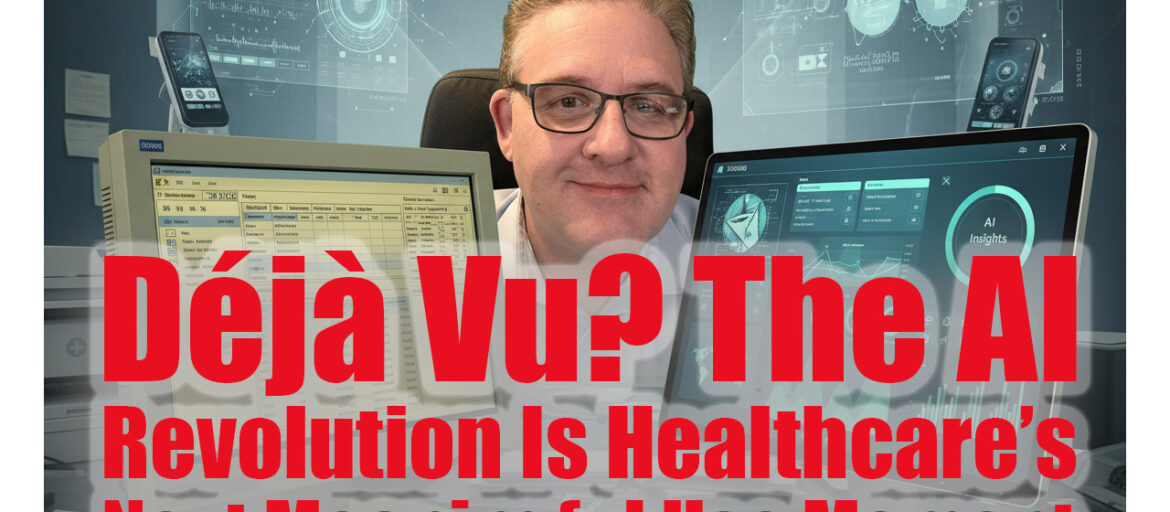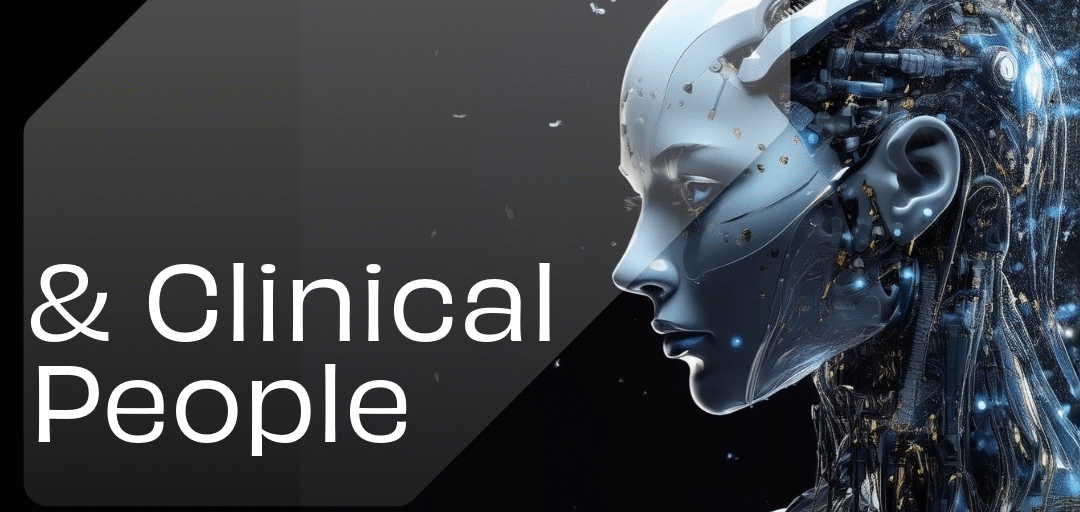From Optional to Essential: Healthcare AI Adoption Timeline for Clinical Professionals
Written by Rod on October 6, 2025
Are you watching healthcare AI adoption slowly unfold while wondering if it’s just another passing technology trend? As someone who witnessed the electronic health records transformation firsthand, I can tell you that healthcare AI adoption is following the exact same mandatory timeline that made EHRs essential worldwide. The parallels are so precise that we can predict when AI will transition from experimental luxury to regulatory requirement – and more importantly, how clinical professionals can position themselves strategically for the premium career opportunities this transition will create.
The Meaningful Use Blueprint That Changed Everything
Let me take you back to 2009, when the HITECH Act introduced Meaningful Use requirements in the United States. At the time, most healthcare professionals viewed electronic health records as optional technology that some progressive hospitals were experimenting with. Sound familiar?
The Timeline That Transformed Healthcare:
2009-2011: Voluntary Adoption Phase
- Early adopter hospitals began implementing EHR systems
- Government offered financial incentives for adoption
- Most clinical professionals remained skeptical
- Implementation was messy, expensive, and disruptive
2012-2014: Pressure Building Phase
- Financial penalties began for non-compliance
- Technology matured and became more usable
- International healthcare systems started their own digitization programs
- Clinical workflow integration improved significantly
2015-2017: Mandatory Transition Phase
- EHR adoption became financially unavoidable
- Healthcare organizations scrambled to find implementation expertise
- Clinical professionals with digital health knowledge commanded premium salaries
- Global healthcare systems accelerated their own EHR mandates
2018-Present: Universal Standard Phase
- EHRs became baseline expectation across developed healthcare systems
- New clinical professionals are trained on digital systems from the start
- Healthcare operates on assumption of electronic documentation
The AI Revolution Following the Same Script
Today’s AI landscape in healthcare is eerily reminiscent of the 2009 EHR environment. We’re witnessing the exact same progression, accelerated by lessons learned from Meaningful Use:
2023-2024: Current Voluntary Adoption Phase
- Progressive healthcare organizations experimenting with AI tools
- Government agencies exploring AI quality measures and incentives
- Clinical professionals expressing skepticism about AI reliability
- Implementation challenges creating resistance to widespread adoption
2025-2026: Pressure Building Phase (We Are Here)
- Regulatory frameworks for AI safety and governance emerging
- Insurance companies beginning to require AI-powered clinical decision support
- Technology becoming more reliable and integrated into clinical workflows
- International healthcare systems developing their own AI adoption strategies
2027-2029: Predicted Mandatory Transition Phase
- Financial penalties for healthcare organizations without AI capabilities
- Scramble for clinical professionals who understand AI implementation
- Premium compensation for professionals bridging clinical care and AI technology
- Accelerated global adoption as healthcare systems compete for efficiency
2030+: Universal Standard Phase
- AI-assisted healthcare becoming baseline expectation
- New clinical professionals trained with AI tools from the beginning
- Healthcare operations assuming AI-enhanced decision support
Why the Pattern Is Identical—And Inevitable
The healthcare industry operates on predictable transformation cycles driven by three consistent factors:
Economic Pressure: Healthcare costs continue rising globally while budgets remain constrained. AI offers the only realistic path to improving outcomes while controlling expenses, making adoption economically inevitable.
Regulatory Momentum: Government agencies worldwide are developing AI oversight frameworks that will eventually include performance requirements. Just as Meaningful Use made EHRs mandatory through financial incentives and penalties, emerging AI regulations will make adoption compulsory.
Competitive Advantage: Healthcare organizations using AI effectively will demonstrate superior outcomes and efficiency. Market pressure will force universal adoption as non-AI organizations become competitively unviable.
Patient Expectations: Consumers experiencing AI in other industries will demand the same intelligent, personalized service from healthcare providers, driving adoption through market forces.
The Global Domino Effect Already Happening
Meaningful Use didn’t remain confined to the United States—it triggered worldwide healthcare digitization that continues today. AI adoption is following the same global pattern:
European Union: The AI Act includes specific healthcare provisions requiring safety oversight and bias monitoring for AI medical devices. Healthcare organizations are preparing for compliance requirements that will make AI governance mandatory.
United Kingdom: NHS England has published guidance for AI-enabled ambient scribing and is developing performance metrics that will eventually tie AI adoption to funding formulas.
Canada: Health Canada is creating AI medical device regulations that will require healthcare organizations to demonstrate AI safety protocols and clinical validation processes.
Australia: The Therapeutic Goods Administration is developing AI medical device pathways that will standardize AI adoption across healthcare systems.
Asia-Pacific: Countries from Japan to Singapore are implementing national AI healthcare strategies that will create regulatory requirements for adoption and safety oversight.
The Clinical Professional Opportunity Window
Here’s what I learned during the Meaningful Use transformation that applies directly to the AI revolution: the biggest opportunities exist during the transition phase, not after universal adoption.
During Meaningful Use (2012-2016): Clinical professionals who understood both healthcare workflows and EHR implementation could command consulting rates of $150-$300 per hour. Healthcare organizations were desperate for expertise that bridged clinical knowledge and digital systems.
During AI Transition (2025-2029): Clinical professionals who understand both patient care and AI implementation will command similar premium rates. The demand will be even greater because AI is more complex than EHRs and carries higher safety risks.
The Skills Premium: Organizations will pay extraordinary rates for professionals who can ensure AI implementation enhances rather than compromises patient care. Your clinical expertise becomes the safety net that prevents AI from causing harm.
Why AI Adoption Will Happen Faster Than EHRs
Several factors will accelerate AI adoption beyond the timeline that Meaningful Use followed:
Technology Maturity: AI tools are advancing rapidly and becoming more reliable. The implementation challenges that slowed EHR adoption are being solved before widespread AI deployment.
Economic Urgency: Healthcare systems worldwide face more severe financial pressure than they did in 2009. AI offers immediate operational improvements that EHRs couldn’t provide.
Regulatory Learning: Government agencies understand how to structure technology mandates effectively after the Meaningful Use experience. AI regulations will be more targeted and faster to implement.
Industry Readiness: Healthcare organizations have digital infrastructure and change management capabilities that didn’t exist during early EHR adoption. This foundation accelerates AI integration.
Competitive Pressure: Healthcare systems know they can’t afford to be slow adopters after watching early AI implementations demonstrate significant advantages.
The Positioning Strategy That Worked Before
During Meaningful Use, I watched clinical professionals make three different choices:
The Resisters: Professionals who refused to engage with EHR technology and found themselves increasingly unemployable as digital systems became standard.
The Adapters: Professionals who learned to use EHR systems after they became mandatory but had no influence over implementation decisions or special compensation for their skills.
The Early Adopters: Professionals who developed EHR expertise during the voluntary phase and commanded premium compensation during the mandatory transition.
The AI Application: The same three choices exist today with AI technology. The professionals who develop AI literacy now will benefit from premium opportunities during the mandatory transition phase.
Your Strategic Positioning Roadmap
Based on the Meaningful Use precedent, here’s how to position yourself for the AI mandate:
Phase 1: AI Literacy Development (Now through 2025)
- Understand how AI works in healthcare without needing to program algorithms
- Learn about machine learning, natural language processing, and predictive analytics
- Participate in AI pilot projects at your current organization
- Build relationships with professionals already working in healthcare AI
Phase 2: Implementation Experience (2025-2027)
- Seek consulting opportunities that combine clinical expertise with AI implementation
- Volunteer to lead AI adoption initiatives at your organization
- Develop expertise in AI safety, governance, and quality assurance
- Build a track record of successful AI projects
Phase 3: Market Leadership (2027-2030)
- Position yourself as a thought leader in clinical AI implementation
- Command premium rates for AI consulting and advisory services
- Influence how AI adoption happens in your clinical specialty
- Build a consulting practice focused on safe AI deployment
The Inevitability Factor
The most important lesson from Meaningful Use is that technology adoption in healthcare is inevitable once economic and regulatory forces align. You can resist, adapt reluctantly, or position strategically.
Economic Alignment: Healthcare systems cannot sustainably improve outcomes while controlling costs without AI assistance. This economic reality makes adoption inevitable.
Regulatory Alignment: Government agencies worldwide are developing frameworks that will make AI governance mandatory. These regulations will drive adoption just as Meaningful Use did.
Clinical Alignment: AI tools that genuinely improve patient care will create clinical demand for wider adoption. Success breeds requirement.
The Choice That Determines Your Future
You’re living through the early stages of a transformation that will reshape healthcare as fundamentally as Meaningful Use did. The question isn’t whether AI will become mandatory—it’s whether you’ll be positioned to benefit when it happens.
Option 1: Ignore AI development and hope it remains optional (it won’t).
Option 2: Wait until AI becomes mandatory and then scramble to catch up (expensive and stressful).
Option 3: Develop AI expertise now and position yourself for the premium opportunities that the mandatory transition will create (strategic and profitable).
The Meaningful Use Lesson: The clinical professionals who engaged early with EHR technology built careers and financial success that lasted long after universal adoption. The same opportunity exists with AI, but the window is closing.
Your clinical expertise is the foundation that makes AI implementation safe and effective. Healthcare organizations will desperately need professionals who understand both patient care and AI capabilities when adoption becomes mandatory.
The pattern is predictable. The timeline is clear. The opportunity is extraordinary.
Are you ready to position yourself for the AI mandate that’s coming whether you prepare for it or not? The transformation is following the exact same script as Meaningful Use, but this time you know what’s coming.
References
[1] The HITECH Act and Meaningful Use Implementation Timeline. HealthIT.gov. https://www.healthit.gov/policy-researchers-implementers/hitech-act-0
[2] Global Health IT Adoption Following US Meaningful Use. HIMSS Global. https://www.himss.org/global-health-it-adoption
[3] AI Regulation Framework Development Worldwide. Healthcare AI Coalition. https://www.healthcareai.org/regulation-framework
[4] Economic Drivers of Healthcare Technology Adoption. Healthcare Financial Management Association. https://www.hfma.org/technology-adoption-economics
[5] Predictive Timeline for Healthcare AI Mandates. Digital Health Institute. https://dhi.org/ai-adoption-timeline




